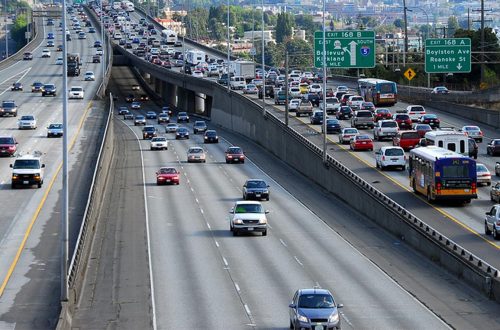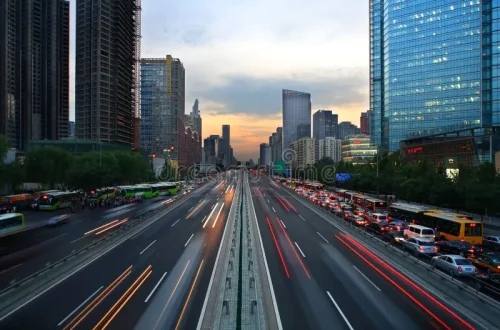As our cities continue to grow, so too does the challenge of urban congestion. In response, a new frontier in transportation is emerging: Urban Air Mobility (UAM). This innovative concept envisions a future where small, electric-powered vertical takeoff and landing (eVTOL) aircraft, often referred to as flying taxis, provide a fast, efficient, and on-demand mode of transportation within and between cities.
These futuristic vehicles are designed to be quiet, safe, and environmentally friendly, offering a solution to the gridlock that plagues our urban centers. The development of UAM is being driven by advancements in battery technology, electric propulsion, and autonomous flight systems. While the prospect of a sky filled with flying taxis may seem like the stuff of science fiction, leading aerospace companies and innovative startups are investing billions in making this vision a reality. As regulatory frameworks are developed and public acceptance grows, UAM has the potential to transform not only how we travel but also the very fabric of our cities.
The concept of urban air mobility represents a fundamental shift in how we think about three-dimensional transportation within cities. Unlike traditional aviation, which operates primarily between distant airports, UAM focuses on short to medium-distance travel within urban environments. These vehicles are designed to take off and land vertically, eliminating the need for long runways and allowing for integration with existing urban infrastructure. The goal is to create a transportation network that utilizes the airspace above our cities, effectively adding a new dimension to urban mobility.
eVTOL aircraft designs vary significantly, with some featuring multiple rotors distributed across the vehicle for redundancy and efficiency, while others incorporate tilt-rotor or tilt-wing configurations for improved aerodynamics during forward flight. These vehicles are typically designed to carry between 2 and 6 passengers, with some cargo variants in development. The emphasis is on safety, with multiple redundant systems and fail-safe mechanisms to ensure reliable operation in urban environments where failures could have serious consequences.
The environmental benefits of electric vertical takeoff and landing aircraft are significant compared to traditional helicopters and ground transportation. Electric propulsion produces zero direct emissions, reducing air pollution in urban areas. The vehicles are also designed to be significantly quieter than conventional helicopters, addressing one of the primary concerns about urban aviation. When powered by renewable energy sources, eVTOL aircraft could provide truly sustainable urban transportation with a minimal carbon footprint.
The development of UAM requires not just advances in vehicle technology, but also the creation of an entirely new transportation ecosystem. This includes vertiports (takeoff and landing facilities), air traffic management systems designed for low-altitude urban flight, and maintenance infrastructure. Vertiports must be integrated into existing urban environments while minimizing their footprint and impact on surrounding communities. Air traffic control systems must be capable of managing hundreds or thousands of vehicles operating in dense urban airspace, requiring sophisticated automation and communication systems.
Regulatory approval represents one of the most significant hurdles for urban air mobility. Aviation authorities like the FAA and EASA are developing new certification standards for eVTOL aircraft and UAM operations. These regulations must balance safety with innovation, ensuring that new vehicles meet stringent safety requirements while not stifling technological advancement. Pilot certification, vehicle maintenance standards, and operational procedures for urban environments all require careful consideration and development.
Public acceptance is crucial for the success of urban air mobility, and concerns about noise, safety, and privacy must be addressed. While eVTOL aircraft are designed to be quieter than helicopters, the cumulative effect of hundreds of vehicles operating in urban areas could still be significant. Safety concerns related to mechanical failures, weather conditions, and emergency procedures need to be thoroughly addressed through robust engineering and operational protocols. Privacy concerns related to surveillance from aircraft operating at low altitudes must also be considered in the development of UAM systems.
The economic viability of urban air mobility depends on achieving cost structures that make it competitive with other transportation options. This requires not only affordable vehicles but also efficient operations, maintenance, and infrastructure. Early implementations are likely to focus on high-value use cases such as airport transfers, emergency services, and transportation for high-income individuals. As technology matures and scales, costs are expected to decrease, making UAM accessible to a broader market. The potential for reduced travel times in congested urban areas could justify premium pricing for time-sensitive travelers.
As we stand at the dawn of urban air mobility, the convergence of advanced aerospace technology, electric propulsion, and autonomous systems suggests that flying taxis may soon transition from science fiction to reality. While significant challenges remain in terms of regulation, infrastructure, and public acceptance, the potential benefits of reduced congestion, improved air quality, and faster urban transportation are driving continued investment and development. The ascending city of the future may be one where the sky is no longer the limit, but a vital component of a comprehensive urban transportation network. The transformation of our urban landscapes to accommodate three-dimensional mobility represents one of the most exciting frontiers in transportation innovation.




